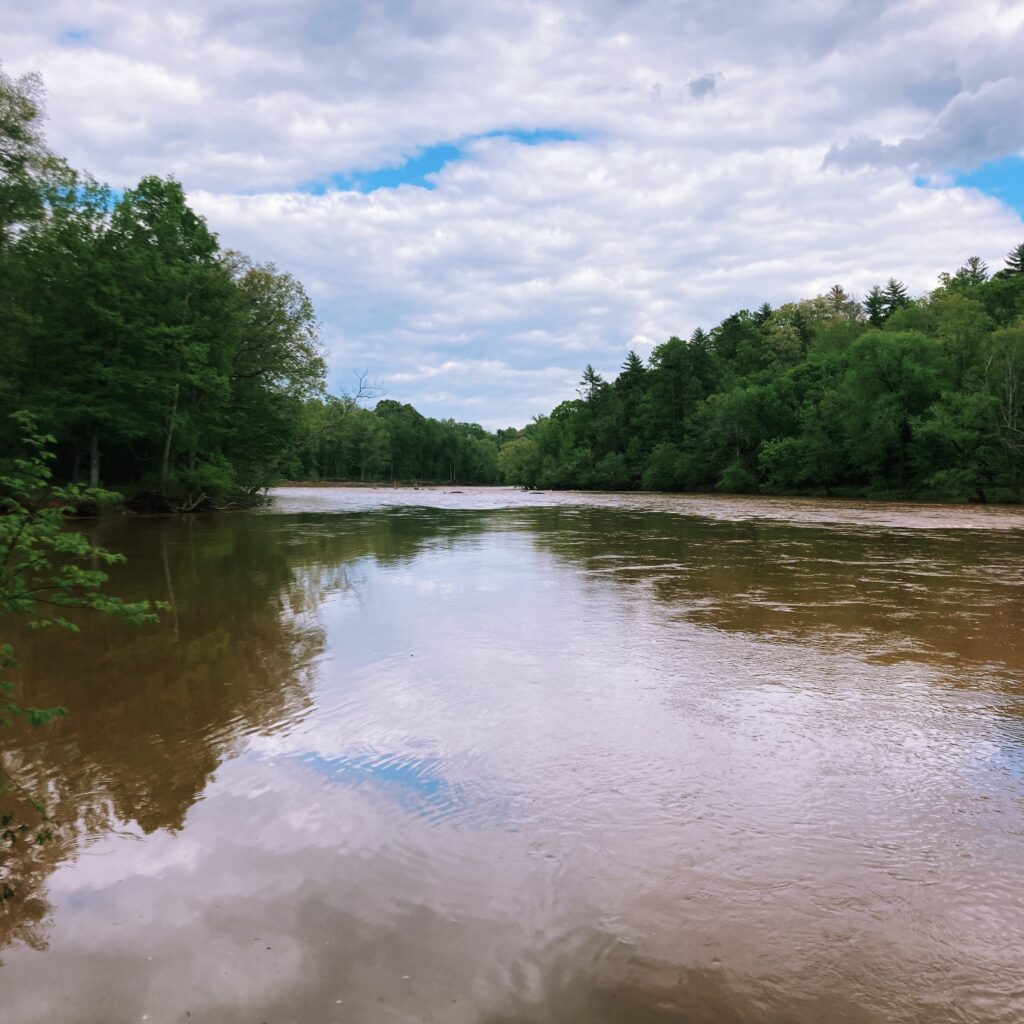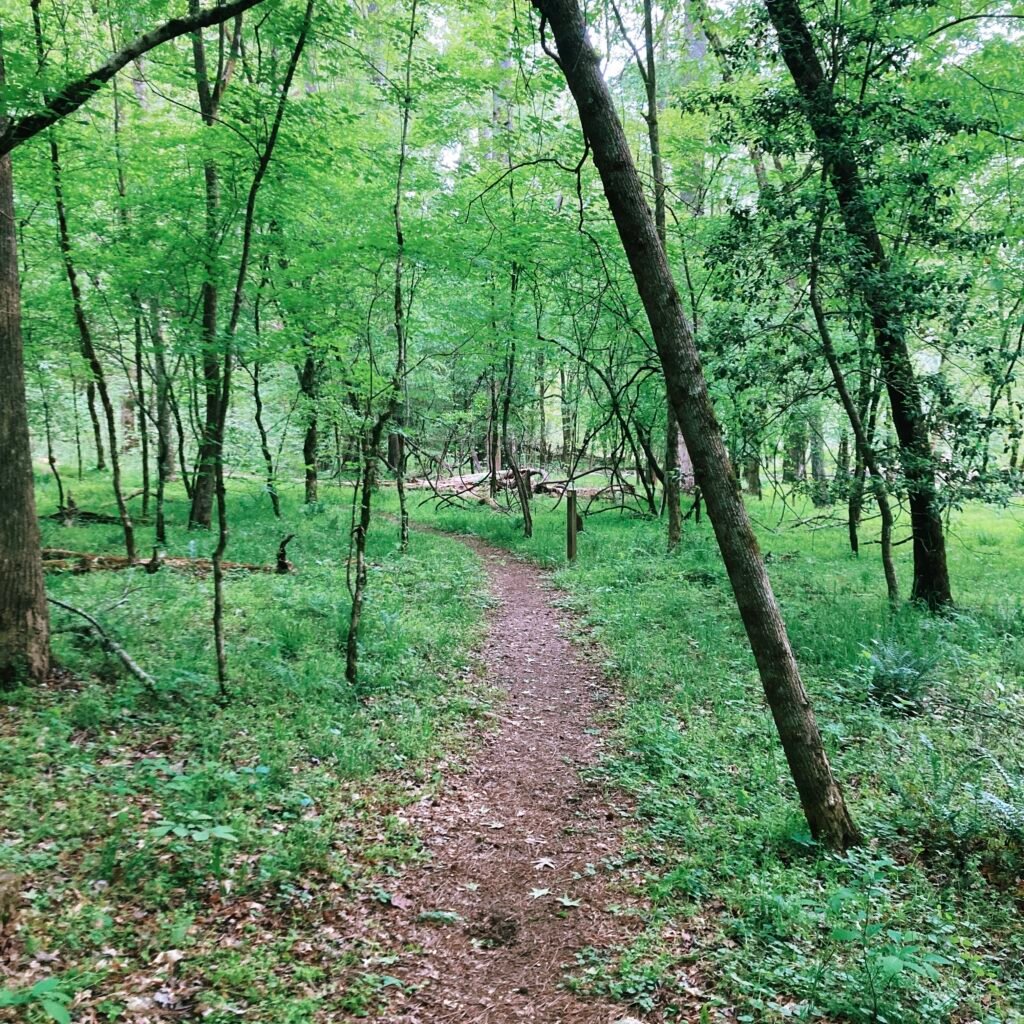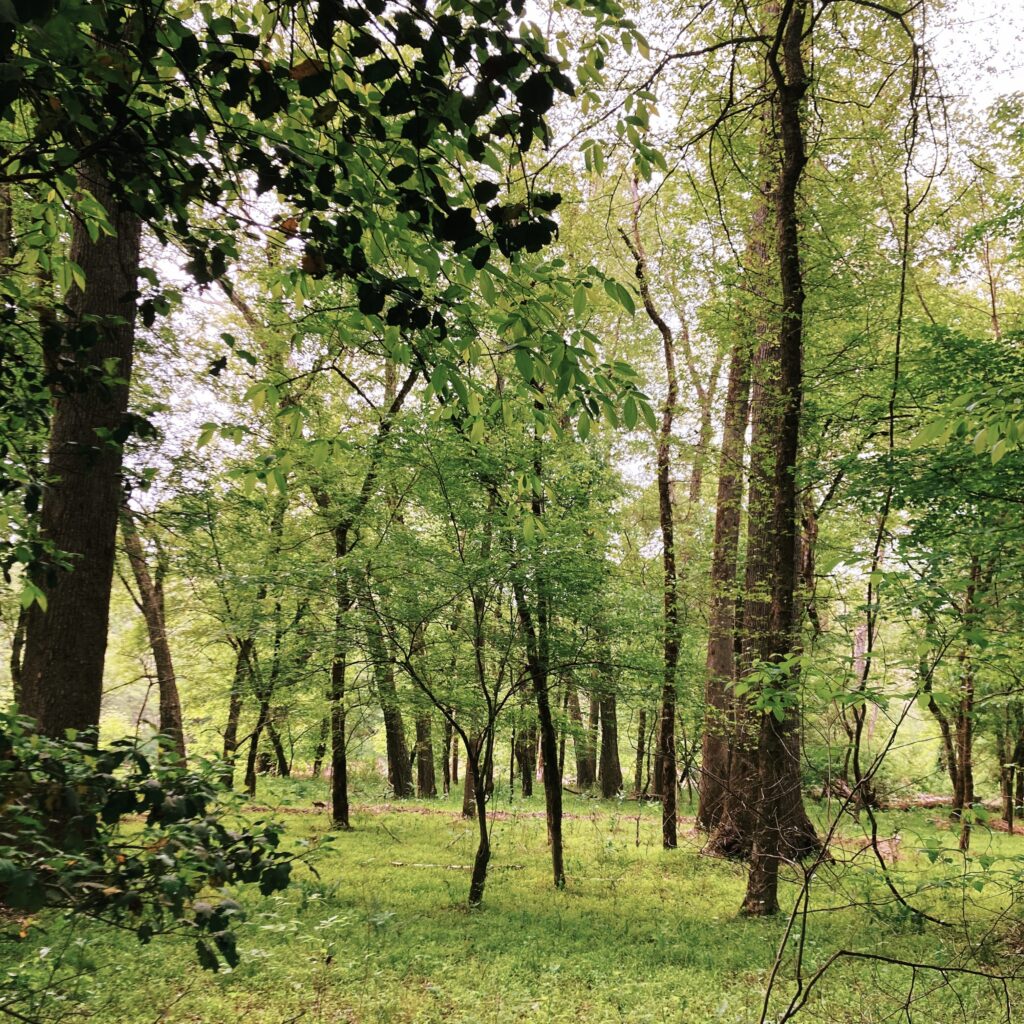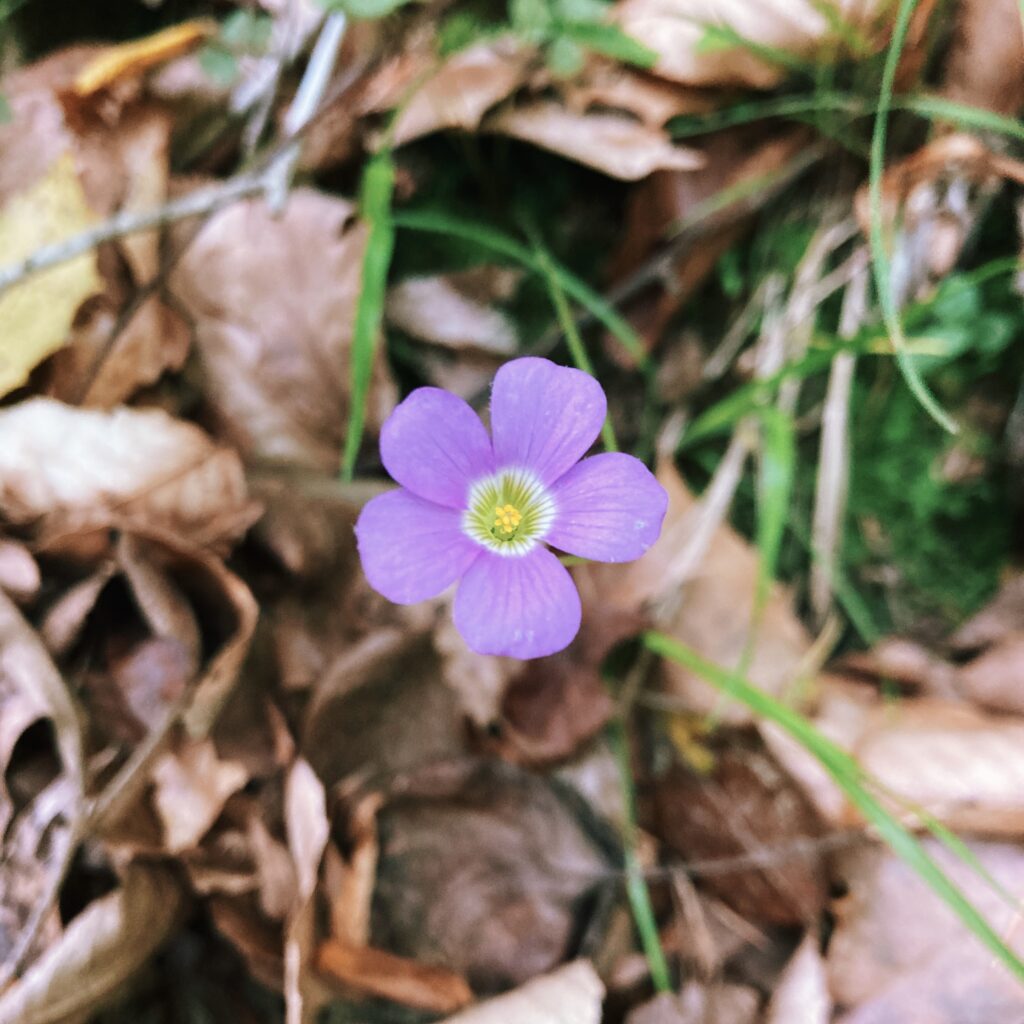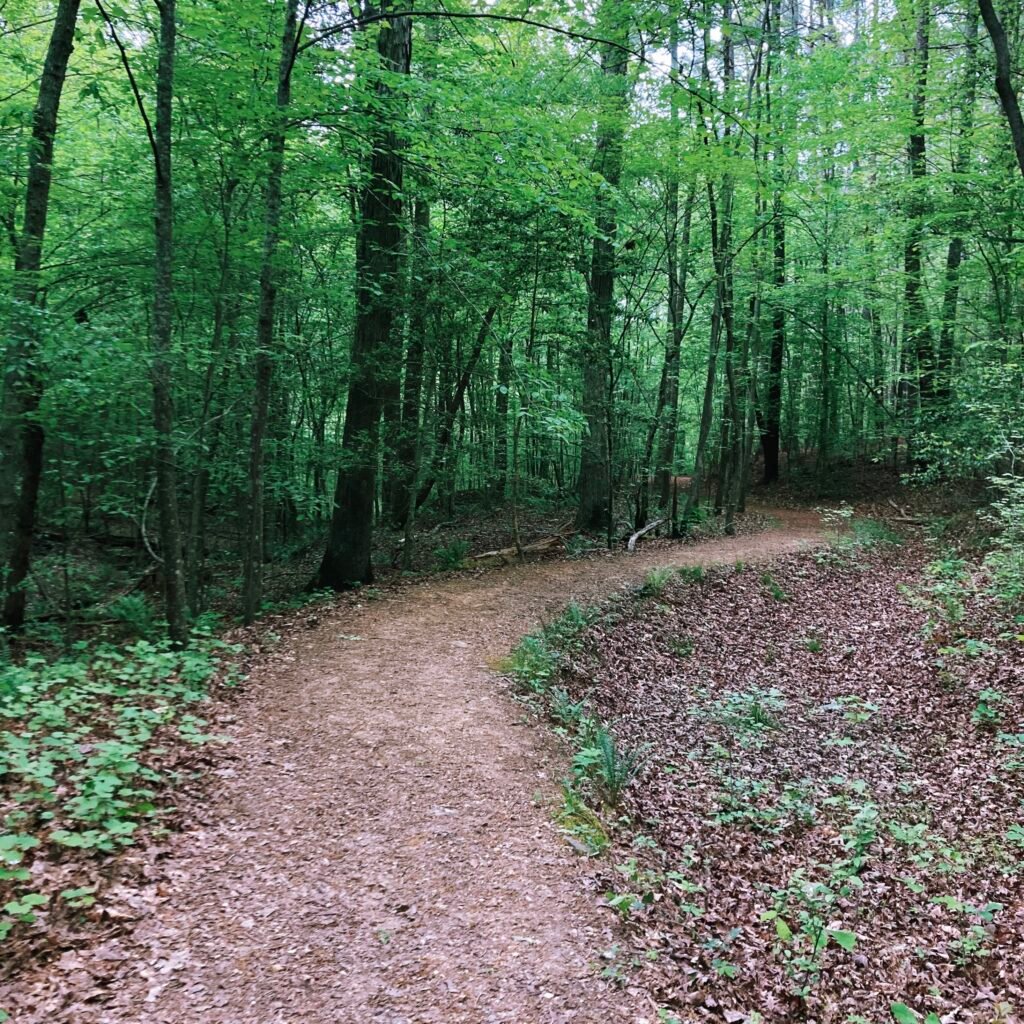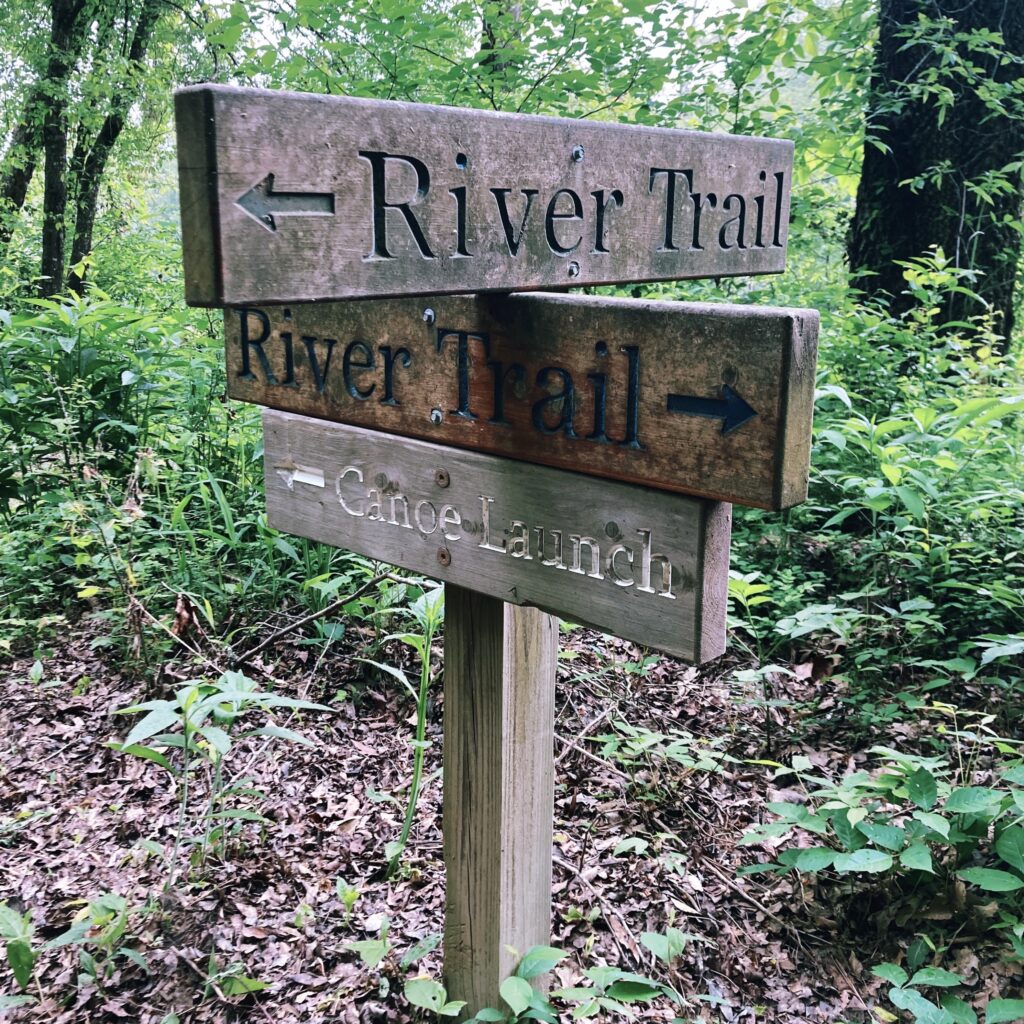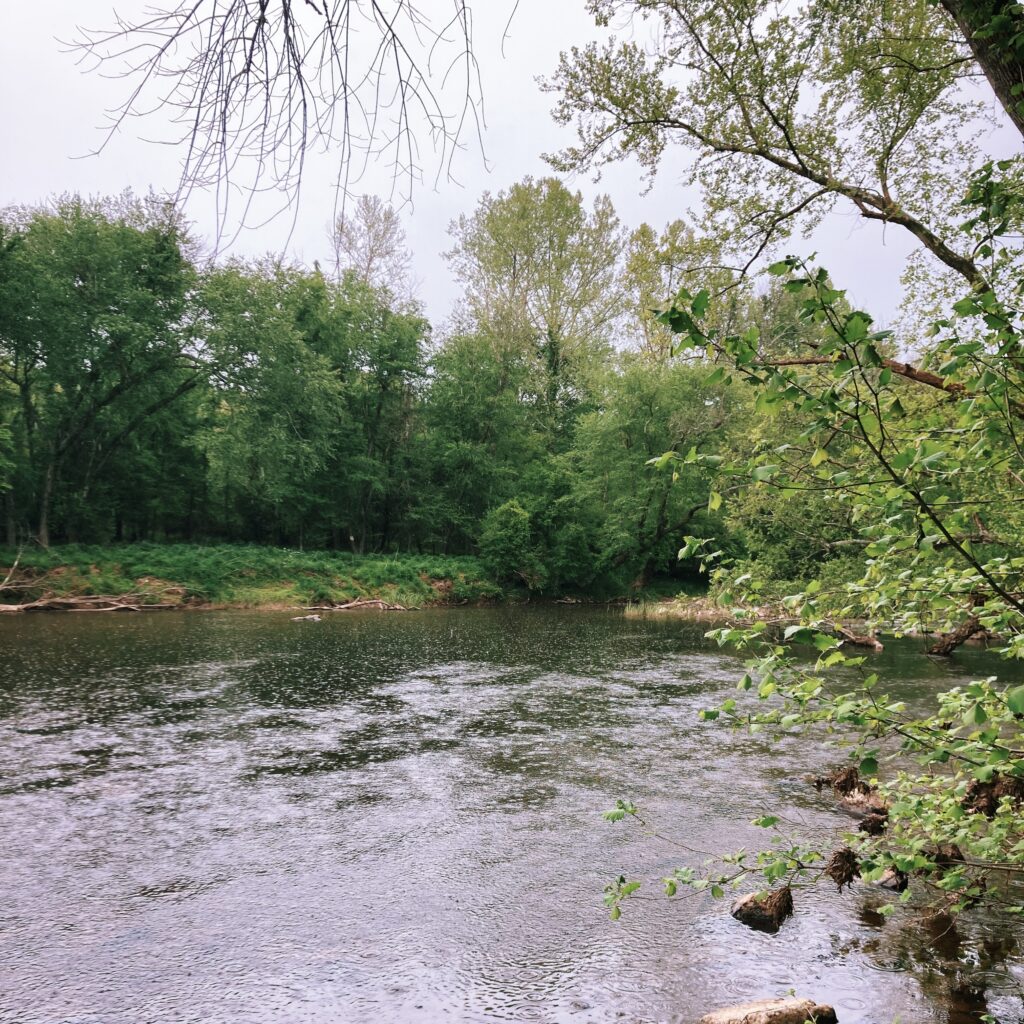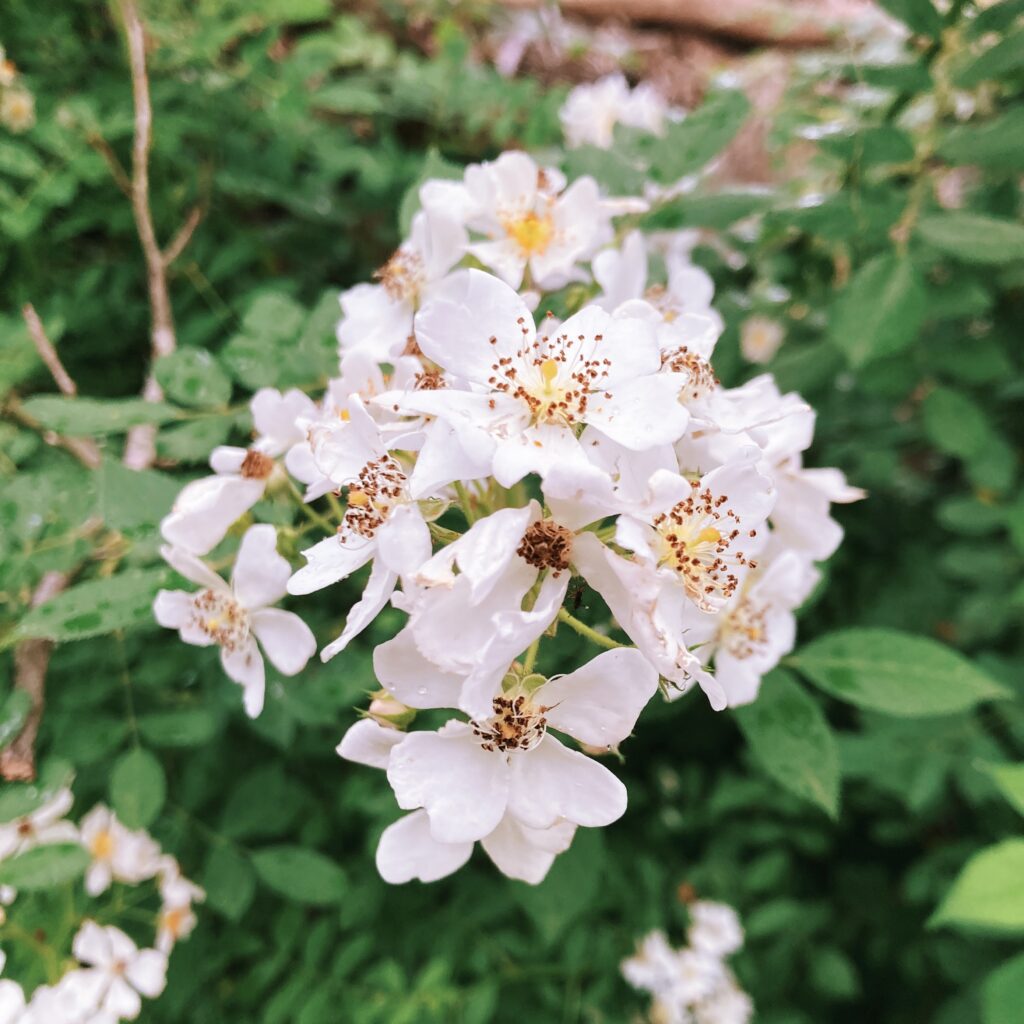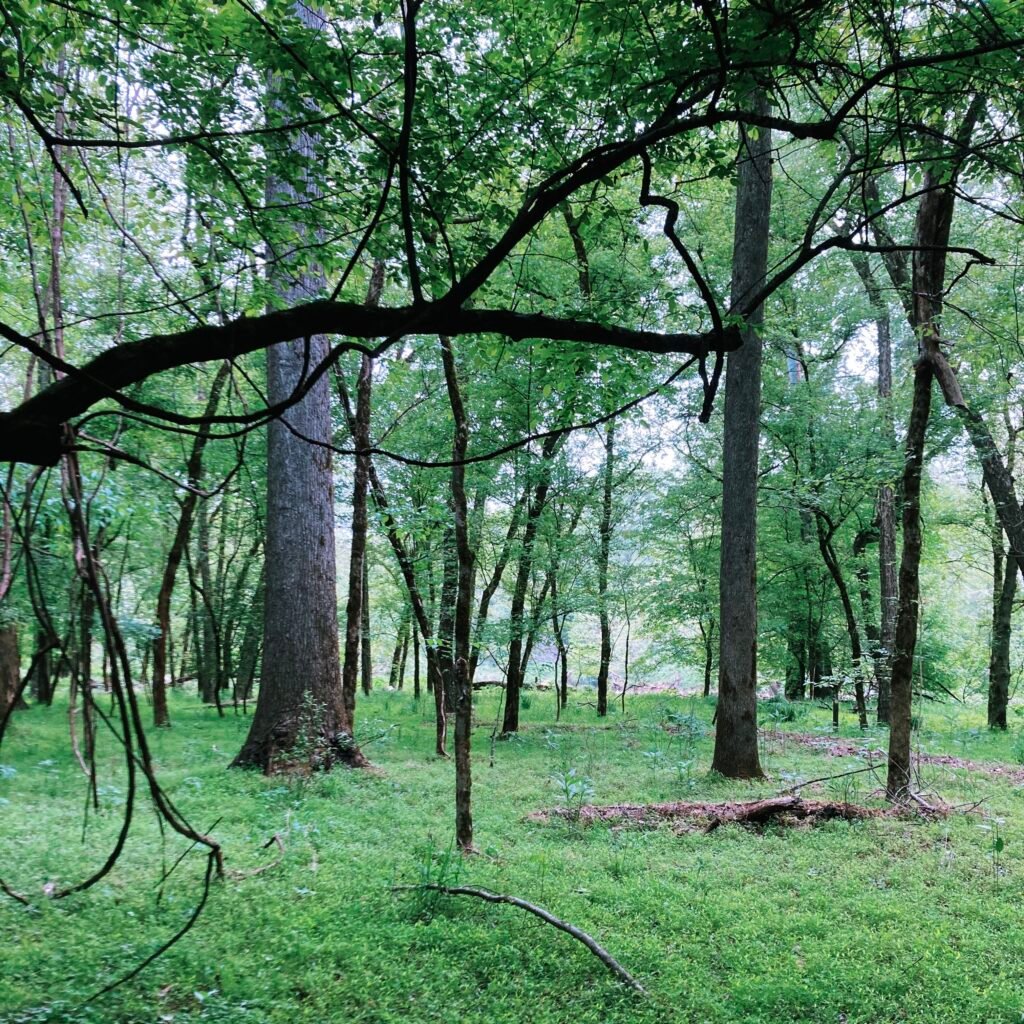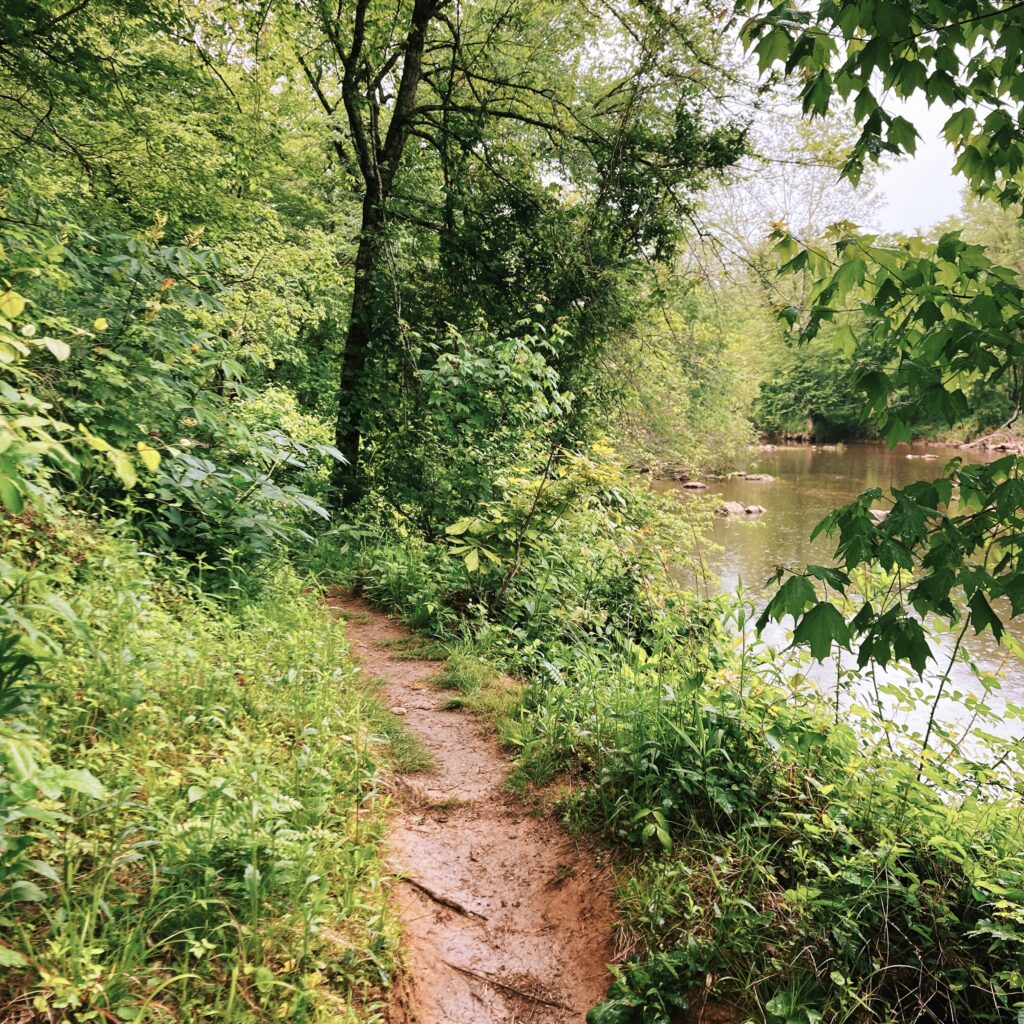Location: Chatham County (Sanford address).
Triangle Land Conservancy’s flagship property, (first purchased and biologically significant), home to federally endangered fish and plant species. Located at the confluence of the Deep and Rocky Rivers, the preserve is a great place to hike, offering beautiful views of the forest and rivers. Temperatures at the preserve can be as much as ten degrees cooler due to its unique microclimate, making it a great summer hiking destination.
It supports several stands of white pines, a tree that is normally found in the cooler mountain region of North Carolina. Many other mountain plants and wildflowers, including Catawba rhododendron, grow at White Pines. The Gilbert Yager Trail explores the southern portion of the preserve, meandering through several distinct forestry types: dry oak-hickory forest on the ridge, Piedmont bottomland forest in the Deep River floodplain, and several stands of native white pines.
There are two parking lots (Shiner’s Way Trailhead and Schoolkids, Gilbert Yager, and White Pines Trailheads). Accesses for canoeing and kayaking provide an opportunity to paddle the confluence of the Deep and Rocky rivers, with a canoe launch by the Rocky River off River Trail and canoe drop-off where the White Pines and River Trails intersect.
White Pines Nature Preserve is part of the NC Birding Trail.
